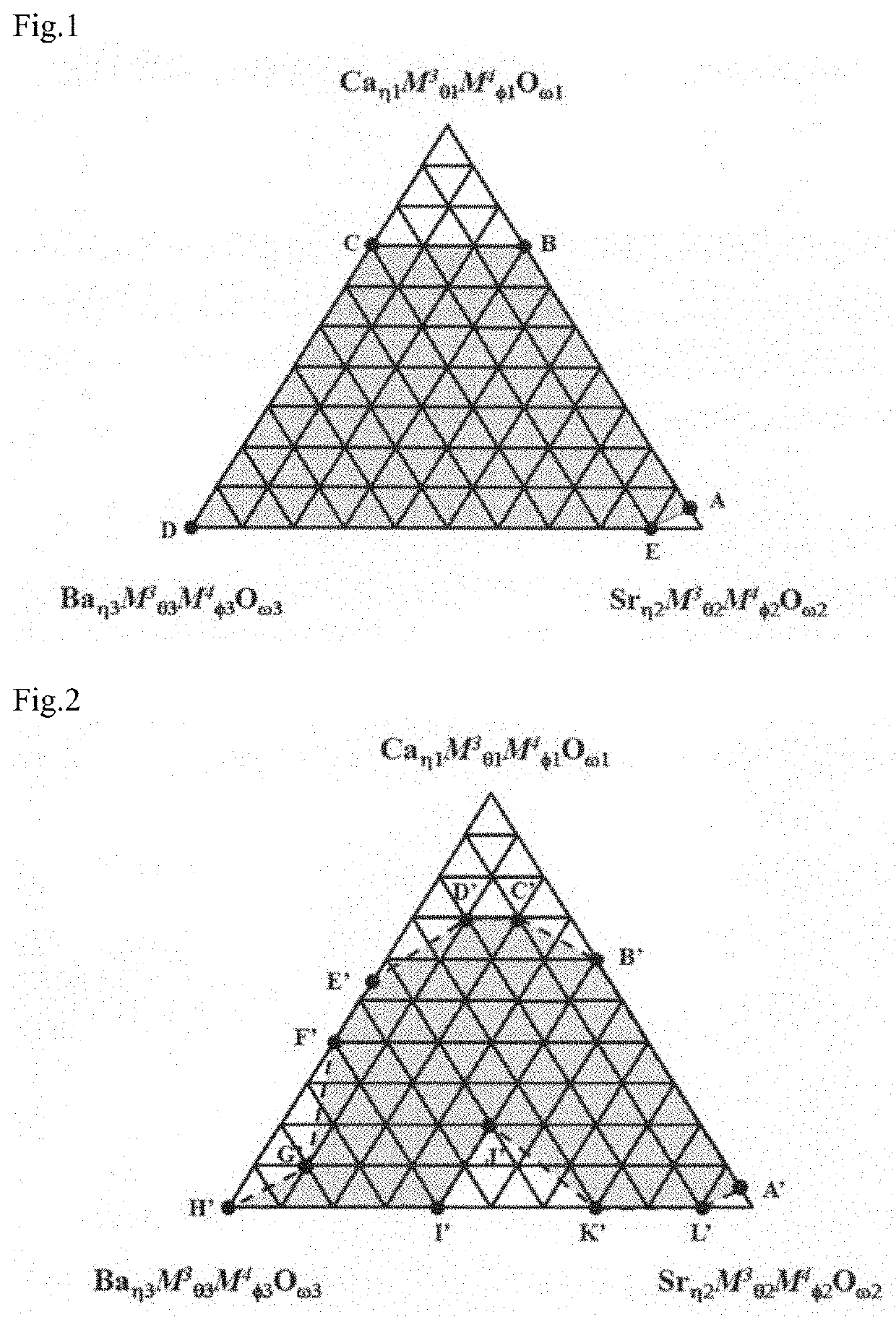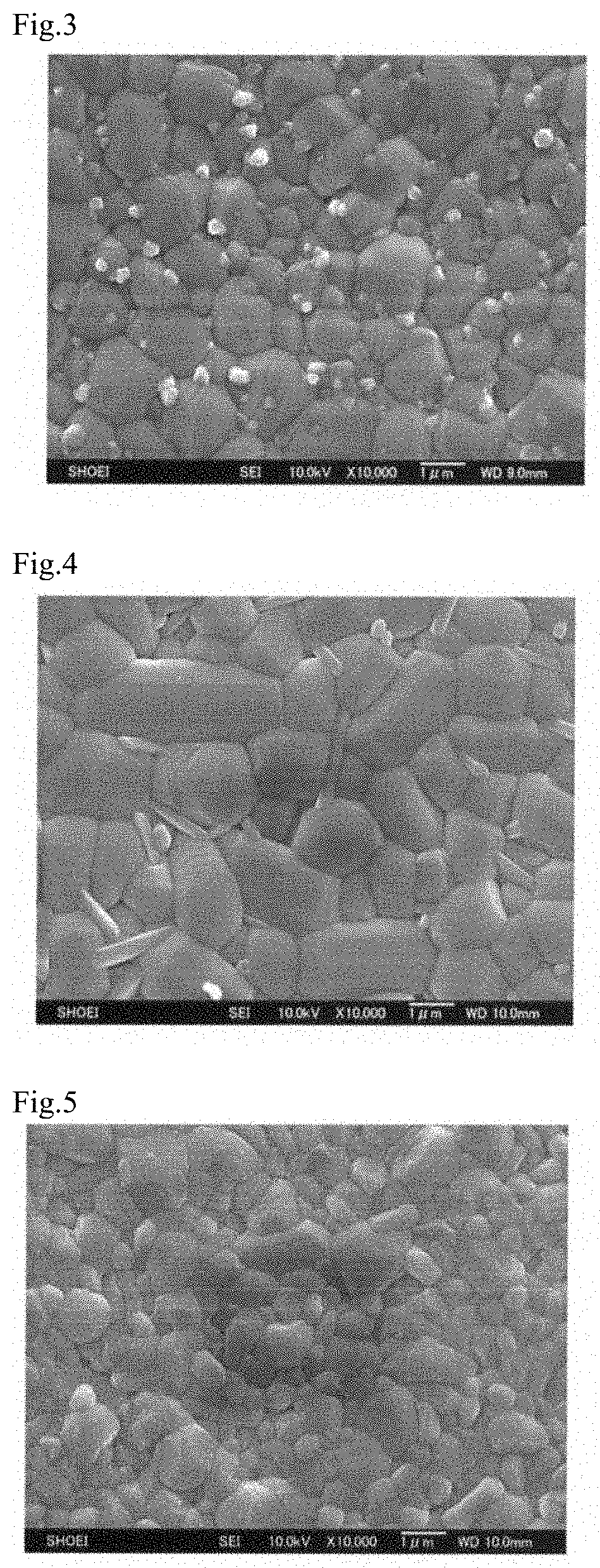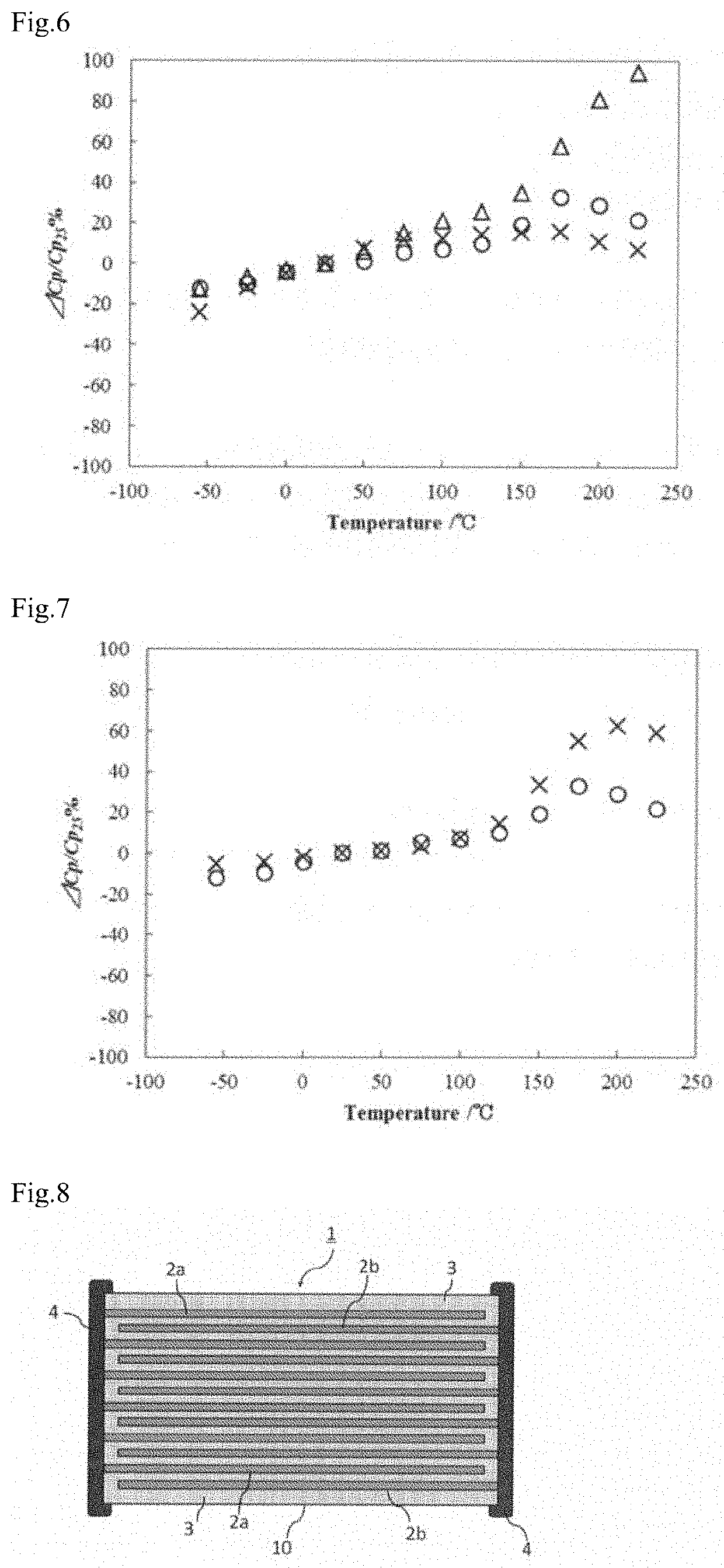Dielectric ceramic composition and ceramic electronic component
a technology of ceramic electronic components and dielectric ceramics, applied in the direction of ceramics, fixed capacitor electrodes, fixed capacitors, etc., can solve the problem of inability to obtain high-capacity capacitors, and achieve the effects of small change in electrostatic capacity, high insulation resistance value, and high relative dielectric constan
- Summary
- Abstract
- Description
- Claims
- Application Information
AI Technical Summary
Benefits of technology
Problems solved by technology
Method used
Image
Examples
reference example 1
[0152](1) Preparation of Reference Samples 1 to 90 of dielectric ceramic composition As the starting materials of the first component, each powder of CaCO3, SrCO3, BaCO3, TiO2, ZrO2, SnO2, Nb2O5, Ta2O5, and V2O5 was weighed so that the ratio of each powder in terms of the oxide was as listed in Table 1, Table 3, and Table 5 and the resultant mixture was wet-blended for 20 hours with pure water using a ball mill.
[0153]Subsequently, each of the blends was dried at 100° C. and thereafter calcinated at 750° C. to 900° C. for 3 hours in the air. The obtained product was similarly finely pulverized again with the ball mill to prepare the dielectric raw material for the first component.
[0154]As the second component, a mixture made by weighing and mixing 18.2 mg of MnCO3, 32 mg of MgO, 58.6 mg of SiO2, and 89.5 mg Y2O3 was provided and the mixture was used as the raw material for second component. Here, in Reference Sample 43, only three components of MnCO3, MgO, and Y2O3 excluding SiO2 wer...
reference example 2
[0184]The Reference Samples 91 to 107 were prepared in the same method as the method in Reference Sample 1 except that the raw materials for the first component described above were weighed so that the compositions in terms of the oxides were as listed in Table 7 and MnCO3 and Sift were weighed as the second component so that the compositions in terms of the oxides were as listed in Table 7. The disk-shaped ceramic capacitors corresponding to each of the samples were provided.
[0185]Thereafter, similar to Reference Example 1, the grain size, the crystal phase, the relative dielectric constant, the change rate of the electrostatic capacity, and the dielectric loss (tan δ) were measured. The results are listed in Table 8.
[0186]From these results, it is found that the samples having the Mn content in terms of MnO serving as the second component of less than 3.500% by mass relative to the total mass of the first component in terms of the oxides provide excellent results with respect to t...
PUM
| Property | Measurement | Unit |
|---|---|---|
| relative dielectric constant | aaaaa | aaaaa |
| relative dielectric constant | aaaaa | aaaaa |
| relative dielectric constant | aaaaa | aaaaa |
Abstract
Description
Claims
Application Information
 Login to View More
Login to View More - R&D
- Intellectual Property
- Life Sciences
- Materials
- Tech Scout
- Unparalleled Data Quality
- Higher Quality Content
- 60% Fewer Hallucinations
Browse by: Latest US Patents, China's latest patents, Technical Efficacy Thesaurus, Application Domain, Technology Topic, Popular Technical Reports.
© 2025 PatSnap. All rights reserved.Legal|Privacy policy|Modern Slavery Act Transparency Statement|Sitemap|About US| Contact US: help@patsnap.com



